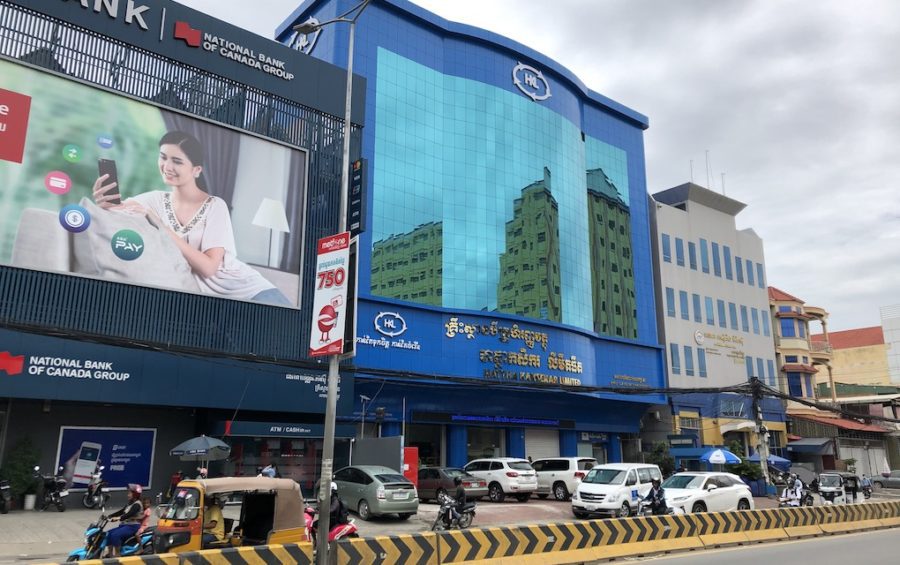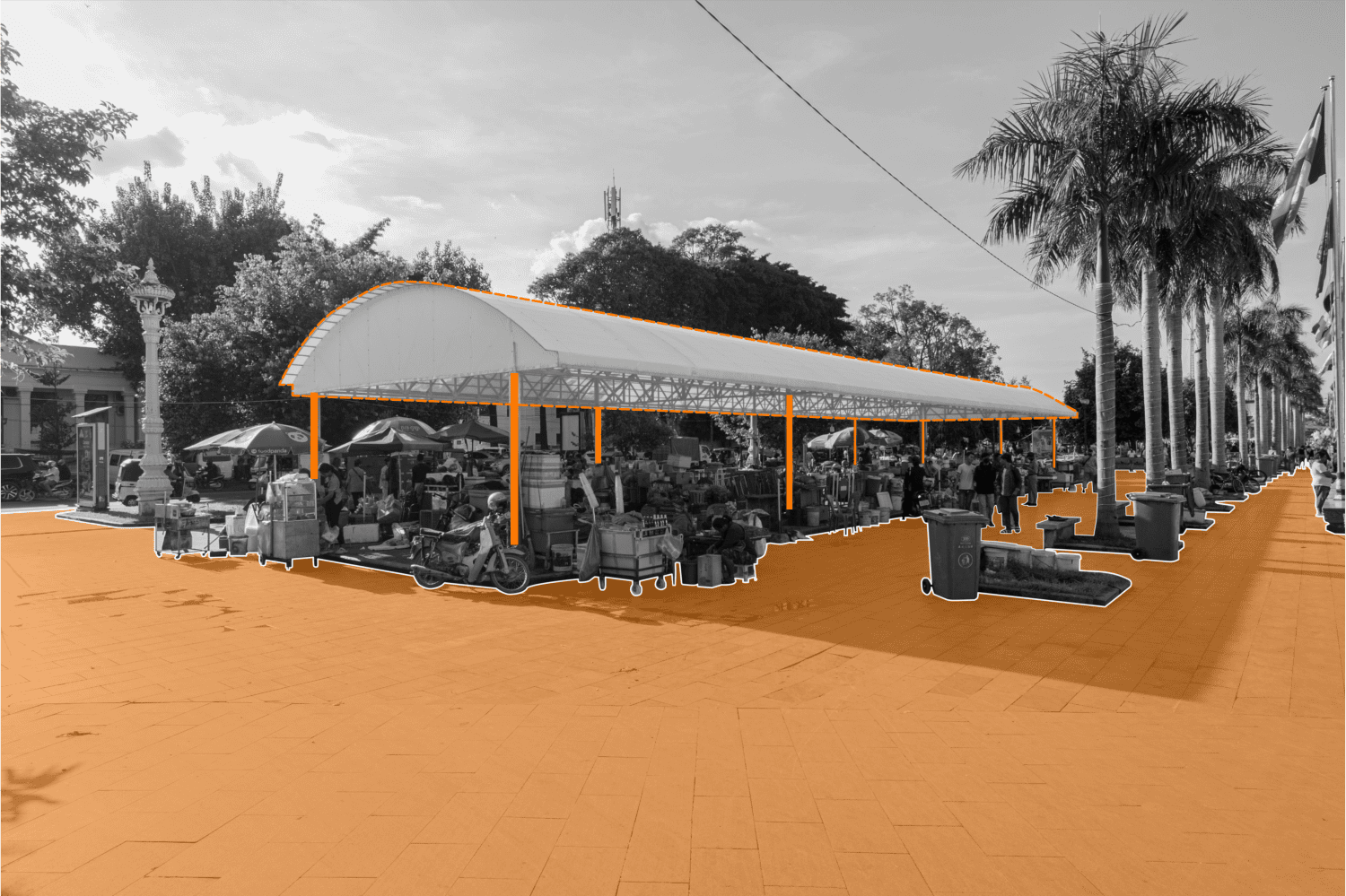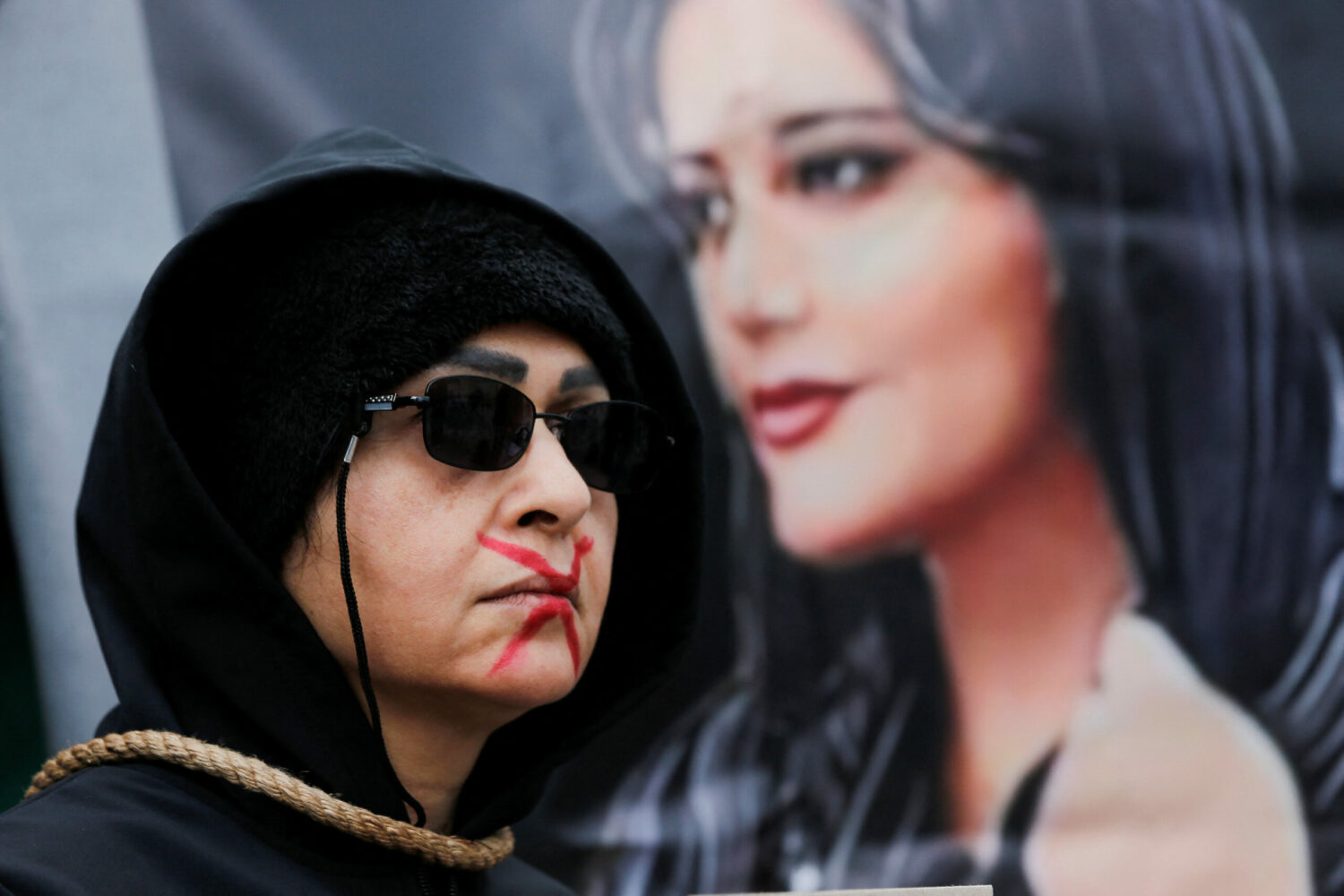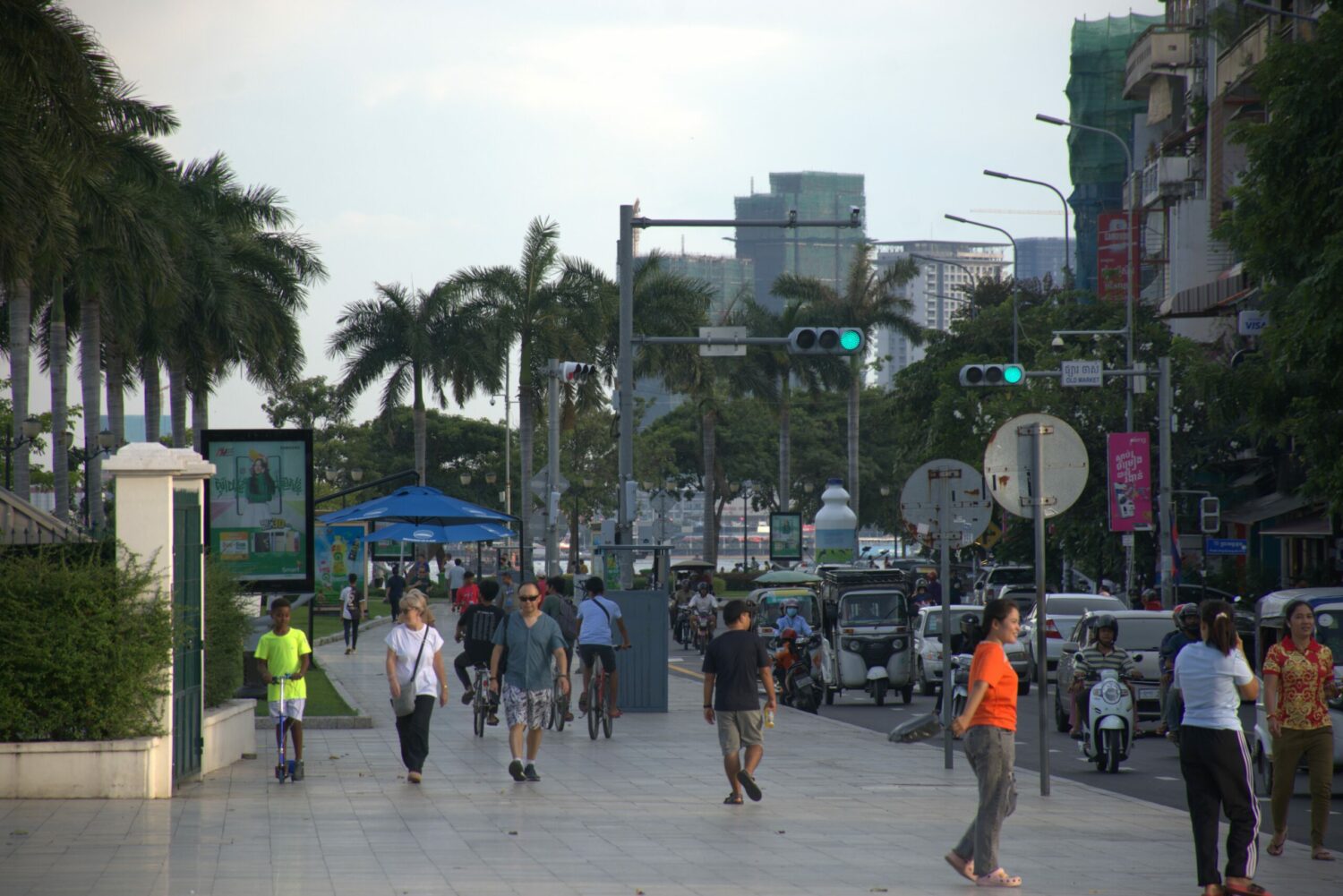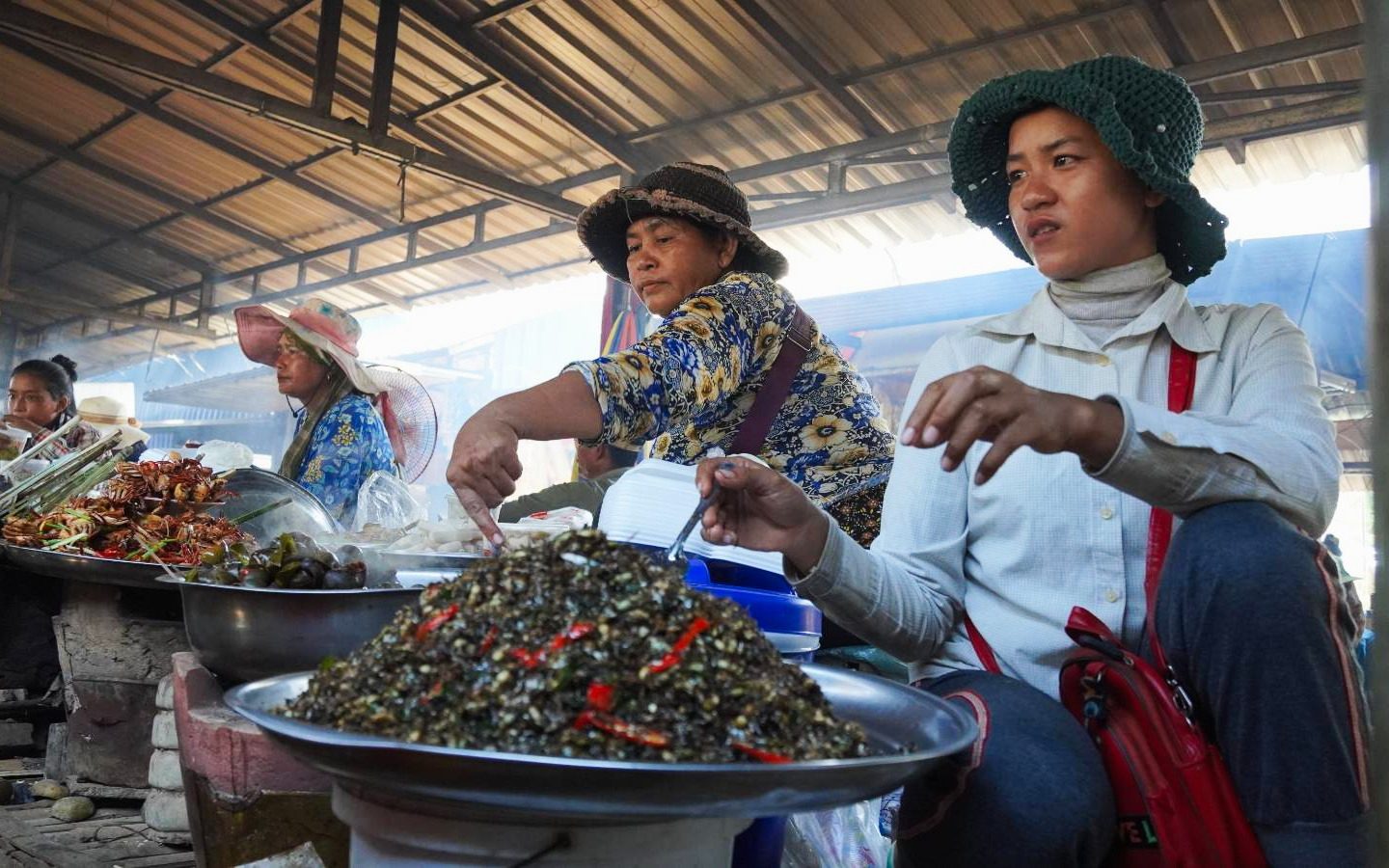Overindebtedness was a growing problem in Cambodia even before the pandemic struck. According to the Cambodia Socio-Economic Survey of 2019-2020, the average outstanding loan of $4,435 per household was an increase of around 85 percent compared to 2017 and a significant increase of 339 percent compared to 2014.
 Samnang Lor is a program coordinator at Future Forum. He has a degree in economics and management, and is now working on several research projects on microfinance, civil society sustainability, Covid-19 economic impact and social inclusion.
Samnang Lor is a program coordinator at Future Forum. He has a degree in economics and management, and is now working on several research projects on microfinance, civil society sustainability, Covid-19 economic impact and social inclusion.
In March 2020, the Microfinance Index of Market Outreach and Saturation (MIMOSA), which measures the market penetration of microborrowers, found that Cambodia had the highest credit saturation rate among the 11 countries surveyed with a loan penetration rate between 11 and 25 percent.
This report also worryingly concluded that Cambodia’s systems for client protection are “uneven” and that there are “no clear [government policies] regarding aggressive sales and debt collection practices.” Additionally, it appears that asset seizure, mainly in the form of land seizure, was an integral part of debt collection practices.
Cambodian families have relied on microfinance to resolve gaps in the provision of public services such as health and education, and obtaining microcredit has become one of their main pandemic survival mechanisms. But this has also meant that indebtedness to MFIs became even more severe as a result of impacts from Covid-19.
Indebted Cambodian workers and their families were earning less due to Covid-19, with some even facing a decision between eating or repaying loans. Take Hy Sokhom, for example. Sokhom, who spoke to VOA in May 2020 about his debts, was making a living driving a tuk-tuk in Kien Svay district of Kandal province. He said his family lost around $300 of their monthly income at the time because of the measures to contain the spread of the Covid-19, and lost a further $300 per month that their sons would have sent home each month from Bavet city when casinos closed. Their monthly loan repayment obligations were $500 per month, a massive burden to the family, Sokhom told VOA.
The Covid-19 crisis brought about new mechanisms to attempt to keep indebted Cambodians afloat, including the use of new loan restructuring practices. But in reality, as researchers have found, loan restructuring has not been available to all indebted Cambodians. In one study, by the Center for Khmer Studies, out of 119 borrowers that were surveyed only 23 people were given the option of restructuring their loan. (The Cambodian Microfinance Association has said that as of October 31, 2021, member institutions provided loan restructuring to 380,000 indebted families worth $1.72 billion.)
These same researchers concluded that loan restructuring alone cannot help borrowers to relieve their debt burden. Therefore, borrowers need to use the combination of all currently available measures. If not, vulnerable households will become heavily indebted with no way out.
To address the indebtedness crisis, Cambodia must adopt more consistent practices and standards to protect consumers, regulate financial service providers, and enhance the stability of the financial sector. Three key mechanisms — the adoption of consumer credit protection, more straightforward bankruptcy filing, and a law that accommodates personal bankruptcy — will help get Cambodian households out of debt and regain control of their finances.
Consumer Credit Protection
Consumer protection is an essential part of a stable financial system, especially for vulnerable and low-income populations. Risky or questionable practices such as irresponsible lending, misleading or forced product sales, product design errors, errors in computer calculations and incomplete disclosures can lead to significant financial losses for consumers and contribute to the downfall of a financial institution.
The experience of developed markets has shown that even the most financially savvy consumers can fall victim to inappropriate market behavior by financial service providers, such as misleading sales tactics or selective disclosure of complex products. The financial crisis of 2008, for instance, is a prime example of how closely linked consumer protection against market abuse and the safety is to the overall health of a financial system.
In Cambodia, problems that could be addressed by stronger consumer protection include:
- Misleading advertising or presentation of interest rates.
- Lack of standard and detailed disclosures that should explain financial products with simple examples of cost, penalty and interest calculations. Such disclosures should clearly explain any risks to the consumer.
- Lack of a consumer dispute mechanism.
There are no standards for filing complaints to financial service providers either; a suggestion box in a branch does not equate to a valid complaint process. In banking, there is also no external dispute resolution process.
Other issues that compound overindebtedness in the country include low literacy and low financial literacy — including the inability to read disclosure documents, contracts, collateral agreements. Performance bonuses for credit officers can also lead to pressure on consumers to sell their assets and property.
Even though these issues are known and have caught the attention of the National Bank as well as financial institutions, and they are working on solving them, even now the problems persist. A comprehensive consumer protection framework, including a framework for assessing risk, is needed to develop and strengthen reflecting the current debt issues.
Bankruptcy Law
While every country around the globe has adopted various bankruptcy laws, there are some common components of these regimes that arguably define the category. A bankruptcy regime in its most basic form provides a relief mechanism to an insolvent debtor, who has experienced some form of financial distress, to pause the collection efforts of their creditors and to seek an orderly resolution or restructuring of their obligations.
By providing a meaningful opportunity for debt relief, bankruptcy schemes can effectively insure debtors against some of the financial distress or effects of declaring bankruptcy.
Bankruptcy provides the debtor a tool to recover by the creditor’s collective effort and most importantly the negotiation between debtor and creditor. It can help reduce financial distress of the debtors.
Cambodia’s Bankruptcy Law, enacted in 2007, applies to both businesses and individuals, but critically, this law only covers individuals who are classified as business operators. This means that individuals who are not involved in a business operation are not eligible to make use of this law.
Although it has been more than 10 years since the Bankruptcy Law was promulgated, the concept of default is still unfamiliar to most Cambodians. In practice, the bankruptcy process is so complex, unwieldy and inefficient that the law is rarely used. According to one piece by lawyer Ly Tayseng in the Phnom Penh Post, rather than go through this bankruptcy process, business owners are more likely to choose to silently shut down operations.
Personal Bankruptcy
Because the 2007 Bankruptcy Law excludes individual borrowers who are not business operators, there is no personal bankruptcy support for ordinary insolvent Cambodian debtors when they are not able to pay off their loan.
Given the common occurrence of personal debt distress — resulting from adverse events such as sickness and accidents, or unemployment and disruption caused by Covid-19 — the mechanism of personal bankruptcy for Cambodians, if it were to exist, could provide some meaningful degree of debt relief. It can also be an effective tool for reducing the social costs of consumer finance.
If such a law existed, debtors would still need to discuss their situations with creditors first, but if no deal can be reached, the debtors would have the right to file bankruptcy proceedings with an appointed court administrator. The court could decide to protect clients against bad financial institutions who lended irresponsibly to borrowers and offer relief. Insolvent people could be exempted from creditors seizing and selling their property, or receive mechanisms of relief to unsecured debt such as credit cards, consumption, repaying loans and medical expenditures.
The intent would give people the opportunity to restabilize their finances and regain their peace of mind.
However, if debtors decide to declare bankruptcy, they would also need to pay the administration cost to file bankruptcy proceedings. And under some systems, property assets could be taken or sold if a compromise plan cannot be reached between the debtor and creditor.
Nevertheless, it is believed that a personal bankruptcy mechanism would provide defaulters with partial protection, though not full, from asset seizure by unsecured creditors. Furthermore, increasing personal bankruptcy protection can increase credit demand through improved risk-sharing, especially from risk-averse borrowers. Without such protection, creditors can diminish the collateral value of assets; and accessing credit will be unsecured.
And the availability of personal bankruptcy itself would change household consumption patterns and cause the use of the bankruptcy process to become more common.
Cambodia lawmakers should consider drafting a law that includes a personal bankruptcy mechanism that can properly fill the gaps left by the current bankruptcy law. This would help both households and creditors alike to be held accountable for their decisions. Debt relief through personal bankruptcy can also help insolvent or overindebted individuals return to productivity and get back to earning income.
The stay of collection between debtor and creditor would provide some time and space for recovery. This may also enable the debtor to keep assets that may be more valuable to the debtor than to the creditors. It can also help reduce the chances that a debtor will experience financial distress or help reduce the costs of such distress.
To address overindebtedness in Cambodia, a combination of consumer credit protection and personal bankruptcy protection must be put into practice. These mechanisms will give indebted Cambodians a better chance of staying afloat during future shock events.
Samnang Lor is a program coordinator at Future Forum. He has a degree in economics and management, and is now working on several research projects on microfinance, civil society sustainability, Covid-19 economic impact and social inclusion.


